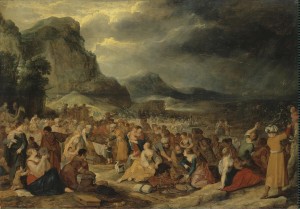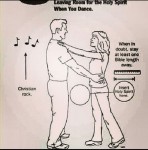 When it comes to the violence of God in the Old Testament, one of the primary areas of concern is not only with God’s apparent violent actions in Scripture, but what God commands Israel to violently do in His name. In other words, the violence of God is often carried out through commands to Israel to do violence.
When it comes to the violence of God in the Old Testament, one of the primary areas of concern is not only with God’s apparent violent actions in Scripture, but what God commands Israel to violently do in His name. In other words, the violence of God is often carried out through commands to Israel to do violence.
Israel as God’s “Hit Man”
Though in the minds of some, there is no difference between God commanding the ground to swallow people up and God commanding the Israelites to kill everyone in a particular city, others see a huge difference between the two. After all, though storms are lifeless and soulless, when God commands people to carry out His judgment He is commanding humans to take the life of other humans thereby involving them in His questionable actions.
Many critics of Christianity think that if God wants to be violent toward humanity, He should do the dirty work Himself. The fact that He asks Israel to be His “Hit Man” only makes the situation worse in the eyes of some.

Some theologians and Bible teachers try to soften the commands of God to Israel to commit violence in His name. Several of these attempts were summarized in the previous posts when we looked at several of the views of how people seek to explain the violence of God in Scripture, but the tragic fact is that violence of Israel cannot easily be explained away, and often the same reasoning that is used to get Israel if the hook in her violence toward neighboring nations is then used to justify (and even encourage) violence today from our own country toward those we view as enemies of God.
We will return to this issue later after we have seen a new way of viewing the violence of Israel.
Understand God by Looking at Jesus
Part of the framework for viewing this violence is to build upon everything we have seen so far in this chapter. If the Bible is the inspired and inerrant Word of God, and if Jesus as portrayed in the Gospels reveals the Father to us, then we should read about God in the Old Testament through the lens of Jesus, and not the other way around. We should try to understand the God of Abraham, Isaac, and Jacob within the light of Jesus. We do not necessarily ask, “What does God teach us about Jesus?” but rather, “What does Jesus teach us about God?”
Understand Israel by Looking at Jesus
The exact same approach can be used when thinking about Israel.




 This is a Guest Post from Leslie Nelson. Leslie is a writer, mother of five and a wife–it’s a busy life.
This is a Guest Post from Leslie Nelson. Leslie is a writer, mother of five and a wife–it’s a busy life. If you are like me, the first thought that comes to my mind is the image of a man dying in the desert. Slowly crawling and hoarsely whispering, “water, water…” This is really not overly dramatic when you consider what our life would be like without the Savior.
If you are like me, the first thought that comes to my mind is the image of a man dying in the desert. Slowly crawling and hoarsely whispering, “water, water…” This is really not overly dramatic when you consider what our life would be like without the Savior.










 Imagine a society where every person aspires to be like Joseph Kony of the Lord’s Resistance Army. It is estimated that Kony has abducted over 30,000 young boys into his army, and many stories report that to prepare these boys for the life they will lead in his army, one of the things Kony forces these young boys to do as “initiation” into his army is to have them brutally murder their own family members. Needless to say, with a beginning like this, the young boys often grow up to be thieves, rapists, and murderers of the worst kind. The United Nations has estimates that over 200,000 young girls and women have been raped in Congo during the past 15 years by members of the LRA.
Imagine a society where every person aspires to be like Joseph Kony of the Lord’s Resistance Army. It is estimated that Kony has abducted over 30,000 young boys into his army, and many stories report that to prepare these boys for the life they will lead in his army, one of the things Kony forces these young boys to do as “initiation” into his army is to have them brutally murder their own family members. Needless to say, with a beginning like this, the young boys often grow up to be thieves, rapists, and murderers of the worst kind. The United Nations has estimates that over 200,000 young girls and women have been raped in Congo during the past 15 years by members of the LRA.



